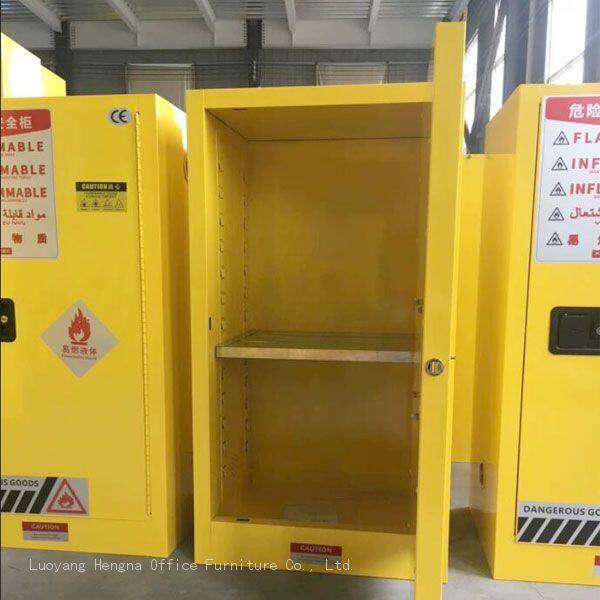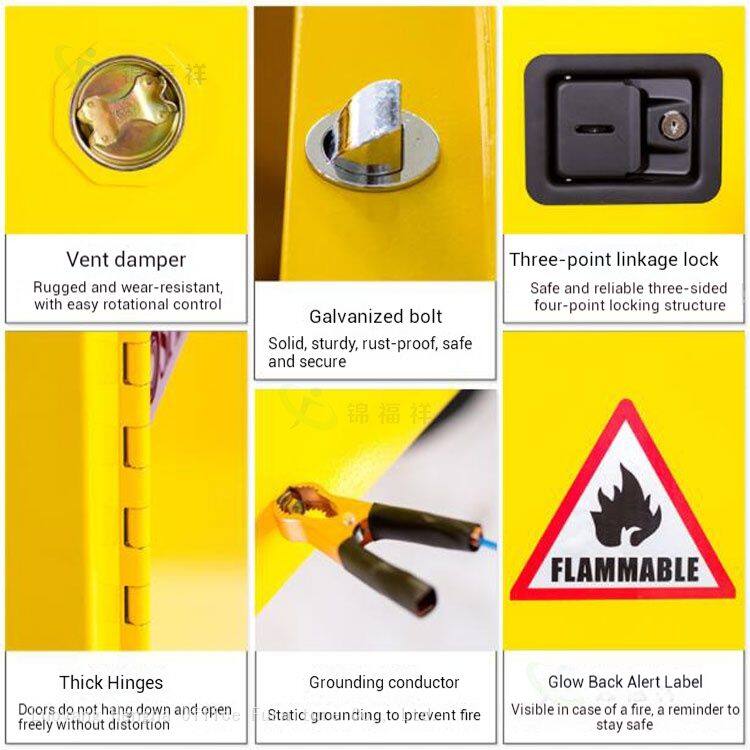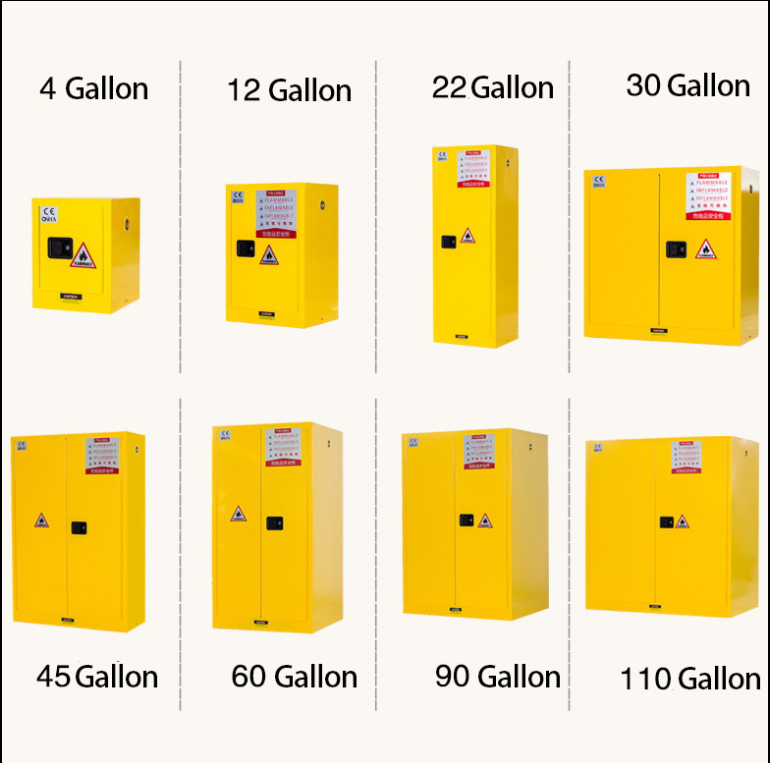-
 Sarah
Hi there! Welcome to my shop. Let me know if you have any questions.
Sarah
Hi there! Welcome to my shop. Let me know if you have any questions.
Your message has exceeded the limit.

Medical Lab Safety: Flammable Storage Cabinet Compliance for Healthcare Facilities
2025-11-06 14:01:43
Medical laboratories handle numerous flammable substances including reagents, solvents, disinfectants, and specimen preservatives that require specialized storage solutions to ensure both worker safety and patient care quality. The implementation of appropriate flammable storage cabinets in healthcare settings represents a critical safety measure that protects laboratory personnel while supporting accurate diagnostic testing and research activities. This comprehensive guide explores the specific requirements for flammable storage in medical laboratories and how proper implementation can enhance both safety and healthcare outcomes.
Medical Laboratory Chemical Inventory
Medical laboratories maintain diverse chemical inventories that support various diagnostic tests, research activities, and quality control procedures. Common flammable substances include alcohol-based reagents, organic solvents, staining solutions, and cleaning agents. The specific chemical inventory varies based on the types of tests performed, research activities conducted, and patient population served.

Chemical inventory management must consider both the quantities used daily and the safety stock required for uninterrupted testing operations. Medical laboratories typically maintain sufficient inventory to support 24/7 operations while minimizing on-site storage quantities for safety. This balance influences storage cabinet selection and placement within the healthcare facility.
Healthcare Regulatory Compliance
Medical laboratories must comply with multiple regulatory frameworks including CLIA (Clinical Laboratory Improvement Amendments), OSHA standards, and healthcare accreditation requirements. These regulations establish specific requirements for chemical storage, documentation, and quality control that directly impact flammable storage cabinet selection and implementation.
Healthcare compliance considerations extend to patient safety, quality assurance, and accreditation requirements. Medical laboratories should work closely with compliance officers and safety specialists to ensure storage solutions meet all applicable requirements. Regular compliance audits and inspections help maintain ongoing adherence to regulatory standards and support continuous quality improvement.
Integration with Clinical Workflows
Flammable storage cabinets should be integrated with clinical laboratory workflows to support efficient testing operations while maintaining safety protocols. Storage placement should consider the flow of chemicals from storage to testing areas, minimizing transport distances and potential exposure risks. Some medical laboratories implement automated chemical delivery systems that connect directly to storage cabinets, reducing manual handling and exposure risks.
Workflow integration benefits extend to supporting various testing procedures and diagnostic processes. Storage systems should accommodate peak testing periods when chemical usage increases, while maintaining safety standards. Some medical laboratories implement inventory management systems that track chemical usage and automatically trigger reordering when levels reach predetermined thresholds, ensuring continuous testing capability without compromising safety.
Patient Safety and Quality Assurance

Medical laboratory operations directly impact patient care quality and safety, making chemical storage an important consideration in overall patient safety programs. Flammable storage cabinets should support quality assurance procedures by providing organized storage that prevents chemical contamination and maintains reagent stability. Some medical laboratories implement inventory rotation systems that ensure older reagents are used first, preventing waste and maintaining testing accuracy.
Patient safety considerations extend to preventing testing errors that could result from contaminated or degraded chemicals. Organized storage systems enable laboratory personnel to quickly identify and access appropriate reagents, reducing the risk of testing errors. Some medical facilities use storage cabinet organization as part of their quality improvement initiatives, demonstrating commitment to patient safety and testing excellence.
Infection Control and Cleanroom Compatibility
Medical laboratories often operate in environments where infection control and cleanliness are critical. Flammable storage cabinets used in or near clean areas must meet specific cleanliness standards and prevent contamination of both stored chemicals and the laboratory environment. Cabinet construction materials should be non-shedding and easy to clean to maintain infection control standards.
Infection control considerations extend to cabinet placement and integration with laboratory cleaning protocols. Some medical facilities implement anterooms or designated chemical storage areas that maintain cleanroom integrity while providing necessary chemical access. The integration of storage cabinets with infection control programs ensures comprehensive protection for both patients and laboratory personnel.
Security and Controlled Substance Handling
Medical laboratories may handle controlled substances or sensitive materials that require additional security measures beyond standard safety requirements. Flammable storage cabinets should incorporate security features that prevent unauthorized access while maintaining accessibility for authorized personnel. This balance between security and accessibility is particularly important in healthcare facilities with strict access control requirements.
Security considerations may include electronic access control systems, biometric authentication, or integration with the facility’s security infrastructure. Some medical laboratories implement inventory management systems that track chemical usage and access, providing additional security and accountability. The selected security features should align with the facility’s overall security policies while supporting efficient laboratory operations.

Emergency Preparedness in Healthcare Settings
Medical facilities must be prepared for various emergency scenarios including chemical spills, fires, and other incidents involving flammable liquids. Storage cabinets should be integrated with the facility’s emergency response plan, with clear procedures for evacuation, containment, and cleanup. Regular emergency drills help laboratory staff practice response procedures and ensure preparedness for actual incidents.
Emergency preparedness considerations extend to coordination with other hospital departments and emergency responders. Medical laboratories should establish clear protocols for communicating incidents and coordinating response efforts. The integration of storage cabinet emergency procedures with the hospital’s overall emergency response plan ensures comprehensive preparedness and rapid response to potential incidents.
Documentation and Traceability
Medical laboratories require comprehensive documentation of all processes and materials, including flammable liquid storage and usage. Storage cabinets should support documentation requirements through organized storage that facilitates inventory tracking, usage recording, and quality control procedures. Some medical laboratories implement digital inventory management systems that integrate with storage cabinets to provide real-time data on chemical usage and availability.
Traceability considerations extend to supporting various testing procedures and quality control activities. Flammable liquids used in medical testing may be associated with specific patient samples or test batches, requiring careful tracking and documentation. Storage cabinets that support organized segregation and clear labeling facilitate accurate documentation and traceability throughout the testing process.

Tags: Medical Lab Safety, Flammable Storage Cabinet, Healthcare Facilities

